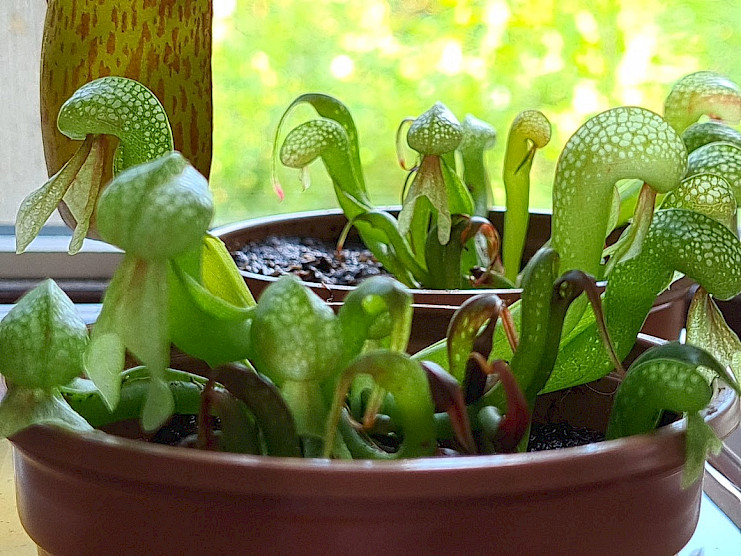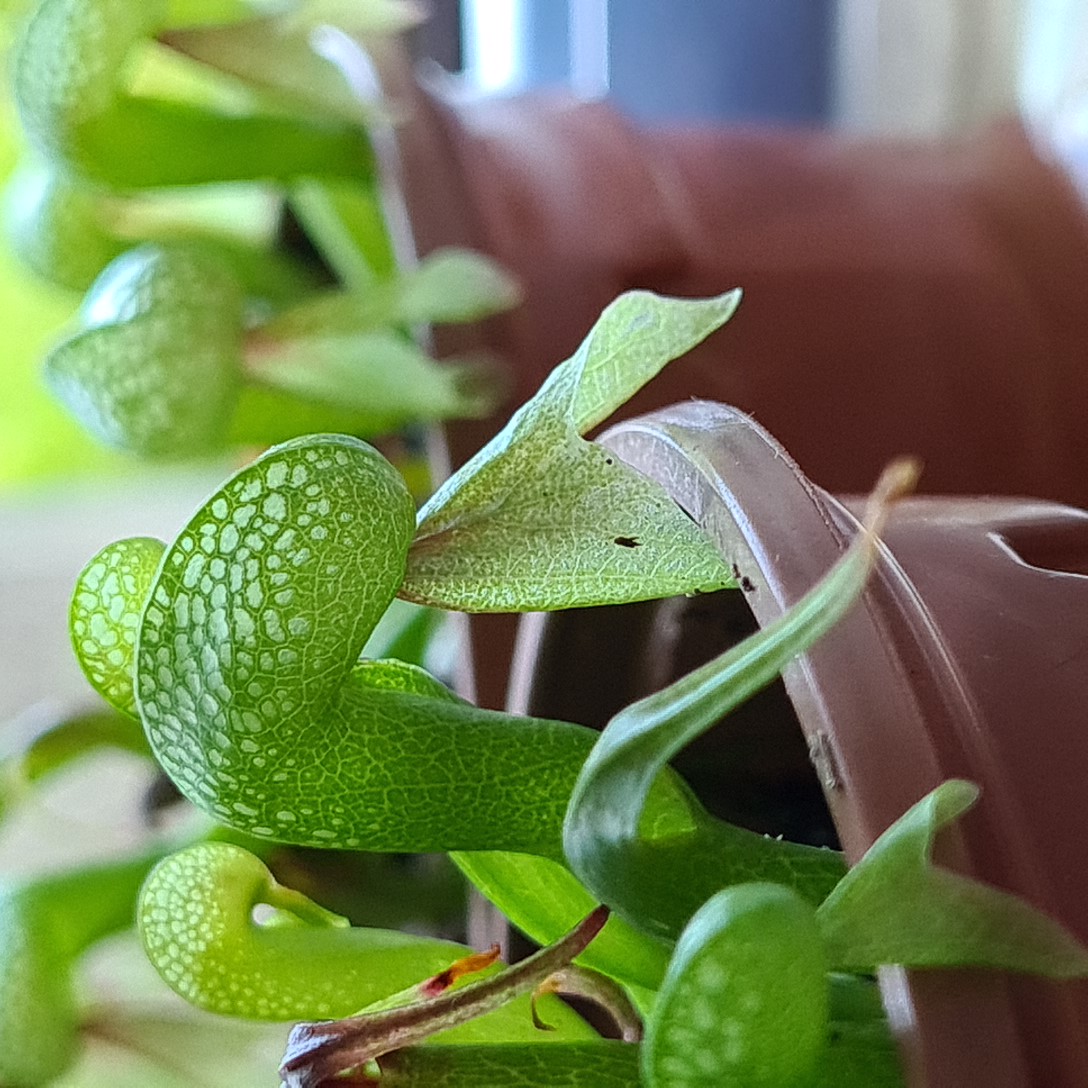

Darlingtonia californica
General
Darlingtonia californica, often known as the California pitcher plant or cobra lily, is a fascinating and visually striking carnivorous plant native to specific regions of Northern California and Southern Oregon. Its unique appearance and intriguing feeding mechanism have made it a favorite among botanical enthusiasts, yet it remains a challenging species to grow successfully outside its native habitat.
Physical Characteristics
Known for its unmistakable resemblance to a striking, rearing cobra, this plant showcases inflated, tubular green leaves curled like a serpent's hood, often with purple or red mottling. The forked leaf appendages (“fangs”) extend from under the hood, enhancing the cobra illusion. Small “windows” (translucent patches) dot the hood, confusing trapped insects. Its roots are distinctive as well, unusually adapted to cold, running water.
Lifestyle
This is a true carnivore—its tubular leaves passively capture flying and crawling insects lured by nectar secretions and enticing aromas. Once inside, prey become disoriented by the light windows and slippery surfaces, eventually falling into a digestive pool at the base, where digestive enzymes and symbiotic bacteria help decompose the catch, allowing nutrient absorption.
Habitat and Protection
Darlingtonia californica naturally thrives near cold spring seeps, mountain bogs, and along stream banks, always where water is cool, well-oxygenated, and constantly moving. It prefers full sun in its native climate but is sheltered by cool air and moist roots. Because its habitats are so specialized and fragmented, wild populations are vulnerable to poaching, habitat disruption, and climate change. Several public and private reserves actively work to protect them.
Cultivation
Growing this plant successfully is notoriously difficult outside of its native environment. The secret lies in mimicking its natural habitat: providing cool roots and pristine, constantly moving water. Traditional container methods are challenging, so many growers use specialized, insulated systems or flowing water trays. Patience and careful observation are essential if you want to cultivate a thriving specimen.
Special Features
- Tubular leaves are modified pitfall traps—one of the most complex among North American pitcher plants.
- "Light windows" inside the hood confuse and trap prey.
- One of the few carnivorous plants that cools its roots with moving water.
- Does not produce digestive enzymes in abundance; relies heavily on bacterial action.
- Flowers are nodding, yellow-green, and appear in late spring, adding ornamental value.
Care
Light
Provide bright, indirect sunlight or several hours of direct morning light. Avoid harsh midday sun unless plants are gradually acclimated. Indoors, supplement with strong artificial lighting.
Temperature
Prefers cool root temperatures (below 68°F / 20°C) even when air temperatures are warm. Hot roots can be fatal. Ambient day air temps may reach 75–85°F (24–29°C) with night drops to 45–55°F (7–13°C) during the growth season.
Water
Use only pure, mineral-free water (rainwater, distilled, or reverse osmosis). Water should be cool, oxygenated, and, ideally, gently moving. Consider running water over roots, or use ice packs to keep substrates cool in hot conditions.
Soil
Choose a loose, airy medium like long-fiber sphagnum moss mixed with perlite or pumice. Avoid peat-heavy mixes that retain too much heat at the roots. Never use ordinary potting soil.
Nutrition
Plants get most nutrients via caught insects, so never fertilize with traditional plant food. Occasional feeding with small live insects can help if natural prey is insufficient.
Humidity
While the plant likes moist air (50–70%), it is more tolerant of low humidity than many other pitcher plants if its roots remain cool and wet.
Dormancy
Needs a distinct winter dormancy—3–5 months at 35–50°F (1–10°C). Reduce watering (do not let roots dry or heat), and decrease light exposure.
Common Problems
Leaf tips brown or "burn"
Cause: Roots overheated due to stagnant or warm water.
Solution: Insulate pots and ensure water remains cool and moving. Never leave in standing warm water.
Pitchers wilt and collapse
Cause: Chronic root warmth or waterlogged, anaerobic soil.
Solution: Use airy media and flowing, oxygenated water. Keep root zone cool.
Stunted growth, pale coloration
Cause: Low light or mineral accumulation in water/soil.
Solution: Increase light exposure, use only purified water, and repot if needed.
Pitchers lack insects inside
Cause: Lack of available prey.
Solution: Occasionally feed with small live insects if grown indoors or in an insect-poor area.
